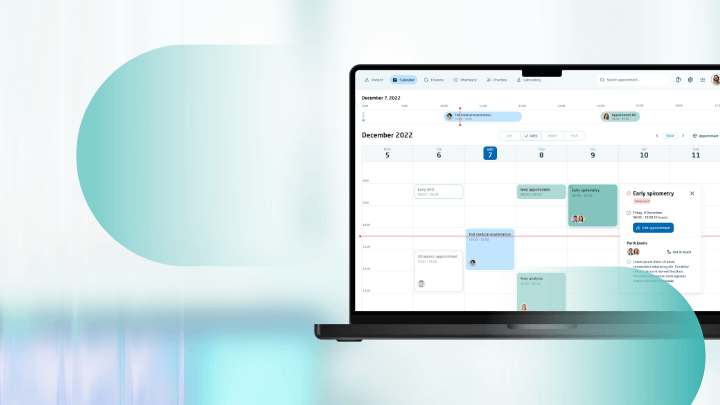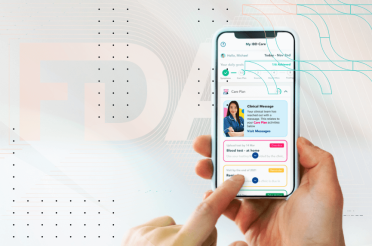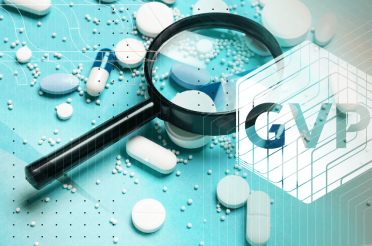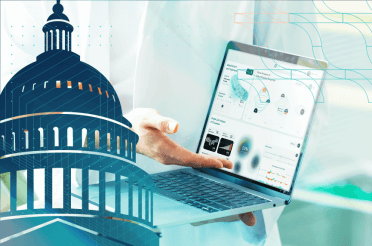In recent years, technology has greatly changed the healthcare industry. It has changed the way medical professionals provide care and run their practices.
The healthcare sector has adopted various technological breakthroughs, ranging from electronic health records (EHR) and telemedicine to wearable technologies and artificial intelligence.
These make it possible to provide more efficient and effective care. Technology not only affects how we offer healthcare, but it also has a significant impact on the administrative/business side of it.
Technologies enable medical practices to streamline operations and reduce costs. With modern tools, healthcare organizations can better manage patient data, communicate more efficiently with patients and other healthcare professionals, and make more informed decisions about care.
One such tool is a medical practice management software. The market for this software is expected to grow by $1.70 billion during 2021-2025. There are many reasons behind this rapid growth, e.g. the need for increased efficiency in the face of rising healthcare costs.
So what does all this mean for you? Do you want to transform your practice into a 21st-century enterprise but are overwhelmed by all the flashy features that product descriptions throw at you? If you are looking for a guide on what is actually important when it comes to choosing a medical practice management software, then look no further!
We’ve compiled a list of the five most critical aspects to consider when deciding on software for your medical practice. Read on to learn what challenges these products solve and how they can assist you in providing the best possible care for your patients.
1. Automation of manual tasks
Automation can be a powerful way to let technology do all the mundane tasks. That way, the workflows of a medical practice can be streamlined and efficiency increased. This leaves practice staff and medical professionals time to focus on patient experience and quality of care.
Here are some instances of jobs that such a software solution can automate.
Scheduling and Appointment Booking
Medical practice management software solutions can automate the scheduling and appointment booking process and significantly increase efficiency.
Some common functionalities that streamline scheduling include:
- Online appointment booking allows patients to view available appointment times and book appointments online through the practice’s website or a patient portal.
- Schedule management allows practitioners to view and manage their schedules, including the ability to add, edit, and cancel appointments.
- Reminders and notifications. Automatically reminds patients about upcoming appointments, as well as practitioners about upcoming schedule changes or cancellations. These can either be in-app notifications or actual text messages. In addition to making patients’ lives easier, this feature also reduces no-shows, which is directly beneficial to your practice.
Inventory management
In today’s fast-paced medical environment, managing inventory can be a daunting task. With a medical practice management solution, you can easily keep track of your inventory levels, reorder items, and ensure that your practice never runs out of essential supplies.
Inventory tracking
With real-time tracking, you can easily monitor the number of items in stock, their location, and when they were last restocked. This allows you to quickly identify when items need to be reordered.
For example, if you set the inventory threshold for surgical masks to be 100, once the inventory reaches that number, the system could send a warning. This will ensure that you know of any impending shortages.

Improve the patient care your provide with advanced management softwareI
Become one o the top healthcare providers by recognizing the important actions you need to take to improve your practice’s management.

Automatic restocking
In addition to inventory tracking, these solutions also offer automated reordering capabilities. This means that when inventory levels drop to a certain threshold, the system will automatically generate a purchase order.
For example, you can make the system do that for items that are below the threshold you set. This will save you time and reduce the risk of human error.
Usage insights
That’s not all, though. These tools also offer advanced reporting capabilities, giving you valuable insights into your inventory usage and trends. For example, you could generate a report to track the consumption, say, of disposable gloves over the last month. This will allow you to make informed decisions about your inventory management strategy.
With these solutions, you can set up an inventory management system that is tailored to your practice’s unique needs. This includes customizing the inventory categories and items you track, setting reorder levels and alerts, and even setting up vendor management.
Don’t let inventory management slow you down. A medical practice management solution can help you dramatically streamline this part of running your practice.
Patient data and documentation management
Medical practices are constantly challenged with managing patient data and documentation effectively. This is where a medical practice management solution can help. It provides a variety of features that can improve the process of managing patient data and documentation.
Electronic Health Records (EHR)
One of the key features of these solutions is the ability to store and manage patient data electronically by integrating with an electronic health record (EHR) system. Such systems allow for easy access to patient information, such as demographic data, medical history, medications, and lab results.
This can help improve continuity of care by allowing healthcare professionals to access patient information easily and make more informed decisions.
Automated data entry
Additionally, these tools can provide automated data entry and management, which can help to reduce the time and effort required to manage patient information. This can be done by allowing for seamless integration of various data sources, such as lab results, diagnostic images, and vital signs, into the patient’s EHR.
Another important feature of these solutions is the ability to share patient data securely with other healthcare providers. This can be done through secure messaging, sharing summary care records, or by connecting to a health information exchange.
What this does is improve care coordination and ensure that healthcare professionals have access to the most up-to-date patient information.
Patient Data Management
Through its sophisticated reporting capabilities, a medical practice management solution can also offer useful insights into patient data and documentation. For example, it could provide a detailed report on patient flow.
This report could show how many patients are being seen per day, week, or month, how long patients are waiting to be seen, and how long they are spending with healthcare professionals. This would help you identify patterns and trends in patient data, such as peak periods of patient visits or longer wait times.
With this information, you could then make adjustments to your scheduling and patient flow processes to improve practice efficiency and reduce wait times for patients. Other use cases for the reporting capability are demographics analysis and quality of care assessments.
Finally, these solutions provide a secure and compliant way to manage patient data and documentation. They are designed to meet regulatory requirements, including Health Insurance Portability and Accountability Act (HIPAA) and Health Information Technology for Economic and Clinical Health (HITECH), ensuring patient data is protected and secure.
These are just a few examples of how advanced reporting capabilities in a medical practice management solution can help you gain valuable insights into patient data and documentation. By having access to all this information, you can make informed decisions to improve the overall performance of your practice.
Next, we take a look at one of the most burdensome aspects of running a practice – managing your “books”.
2. Financial management features
Financial management is a crucial aspect of running a medical practice. A medical practice management solution provides a range of features to help you manage your practice’s finances effectively.
These features include tools for billing, accurate invoicing, budget planning, claims management and insurance eligibility. Furthermore, reporting and analytics capabilities provide insights into your practice’s financial performance.
Access to such tools ensures that your practice is running efficiently, generating revenue and staying compliant with regulatory requirements. Let’s go over them in more detail.
Automated billing and claims management
One key feature you should look for is the ability to automate billing and claims management. This helps reduce errors and increases efficiency. For instance, you could use the software to automatically generate and submit claims to insurance providers, track the status of claims, and receive electronic remittances. This can save time and optimize cash flow.

Transform your healthcare practice by updating your management software
Take the first step towards building a more efficient healthcare practice by updating to a management software that can revolutionize your operations.
Revenue cycle management
The software should allow for efficient management of the entire revenue cycle, from patient registration to payment collection.
This includes features such as:
- managing patient billing and collections
- generating financial reports
- monitoring outstanding balances
Financial reporting and analytics
A good software also offers financial reporting and analytics, providing valuable insights into your practice’s financial performance. This includes generating reports on revenue, expenses, and profitability, as well as tracking key performance indicators such as billing and collections. This can help identify areas for improvement and inform financial strategy.
Insurance eligibility check
An important feature is insurance eligibility check. This enables you to verify the patient’s coverage, benefits and authorization before the visit. This way, you will avoid denied claims and improve the revenue collection.
All of these features would improve the financial health of your practice and enable you to make smarter decisions.
3. Analytics and reporting
We went over some aspects of this when we discussed financial management and automation of manual tasks. It cannot be overstated, however, how important data analytics has become to running any efficient enterprise.
That’s why we want to delve further into some other analytics tools you should look out for. This will show you how you can harness the power of AI to extract the most of all the data at your fingertips.
Predictive analytics
This feature uses historical data to predict future trends and patterns in patient flow, appointment scheduling, and billing. This will help you anticipate and plan for changes in patient demand, staff scheduling, or billing issues.
For example, using predictive analytics, you could predict peak periods of patient visits and schedule staff accordingly, or identify patterns of non-payment in billing and make adjustments to your billing processes to increase revenue collection.
Real-time reporting
With real-time reporting, you have access to up-to-date information on patient flow, appointment scheduling, and billing. This allows you to monitor the performance of your practice in real-time, so you can quickly identify and respond to any issues as they arise.
For example, using real-time reporting, you could monitor the patient flow in your practice in real-time. If you notice a sudden drop in patient flow, it could indicate that there is an issue that needs to be addressed.
This could be due to a variety of factors, such as a lack of awareness about your practice, a lack of convenience for patients, or a lack of staff availability.
By identifying issues quickly, you can take action to address them. Possible solutions include implementing a marketing campaign to increase awareness about your practice, improving the convenience of your practice for patients, or scheduling additional staff.
By addressing problems in a timely manner, you can improve patient flow and improve the performance of your practice. Access to real-time data would greatly aid you in such endeavours.
Customizable reports
A customizable reports feature enables you to create reports tailored to your specific needs by choosing the metrics and data points that matter most to your practice.
This way, you can gain in-depth insights into the performance of your practice, such as identifying which practitioner sees the most patients, or measuring the average wait time for appointments.
Dashboards
Dashboards can provide an at-a-glance view of key metrics, such as patient flow, appointment scheduling, and billing. This would help you to quickly identify areas of improvement and make adjustments to your practice processes.
The dashboard should be customized to your needs. For instance, you should be able to select the data points and metrics you want to monitor.
By providing advanced analytics and reporting features, a decent medical practice management solution will help you gain valuable insights into the performance of your practice, anticipate and plan for changes and monitor performance in real-time.
4. Security features
Data encryption
One of the key features of secure medical practice management software is data encryption. This feature ensures that sensitive patient information is protected from unauthorized access by encrypting the data using an encryption key. This key is only accessible by authorized parties, such as healthcare professionals.
For example, when a patient’s medical record is stored in the software, it will be encrypted using a unique encryption key. When a healthcare professional with the proper permissions wants to view the patient’s record, they will use the encryption key to decrypt and view the data.
Compliance with regulations
Another important feature of secure medical practice management software is compliance with regulations such as HIPAA and GDPR. These regulations ensure that patient data is protected and processed properly. A well-built software complies strictly to these.
Health Insurance Portability and Accountability Act
HIPAA sets guidelines for data protection in healthcare and any organization that handles protected health information in the US must comply with these rules. For example, it requires that softwares have administrative, physical and technical safeguards to protect the confidentiality, integrity, and availability of electronic protected health information (ePHI).
This includes implementing measures such as access controls, audit trails, and data encryption to ensure that only authorized individuals can access patient information.
General Data Protection Regulation (GDPR)
GDPR protects sensitive information of European citizens and gives individuals the right to request for their data to be deleted to prevent misuse by third parties.
GDPR has several provisions that software must conform to, such as the requirement for obtaining explicit consent for data processing, data minimization, and the right to be forgotten. This means that software must provide clear and concise information to patients about how their data will be used, and obtain their consent before processing it.
Additionally, software must only collect and process the minimum amount of data necessary, and must also provide patients with the ability to request for their data to be deleted if they wish.
High availability
Another important feature for secure medical practice management software is high availability. This ensures that the software is always available and accessible by authorized personnel whenever needed.
For example, if a cyberattack occurs, the software should still function properly, and patient data should still be accessible by healthcare professionals. This is achieved by implementing measures such as fault tolerance and resilience to ensure that the software can handle system crashes or cyberattacks without suspending operations.
Cloud infrastructure security
Cloud infrastructure security is also crucial for secure medical practice management software. This includes measures such as user and device access control, malicious behavior identification, and malware prevention to protect against data misuse.
For example, the software should have controls in place to prevent unauthorized access to patient data stored in the cloud, and should be able to detect and prevent any malicious activity on the system.
Strong password policies and multi-factor authentication
To minimize the risk of user accounts and patient data being compromised, the software should have strong password policies and multi-factor authentication in place. For example, a strong password policy could require the use of a combination of letters, numbers, and special characters, as well as a minimum length for passwords.
Additionally, the software should also have a mechanism in place to enforce regular password changes and prevent the reuse of old passwords.
Multi-factor authentication (MFA) is an added security measure that requires an additional form of verification beyond just a password. This could include a fingerprint scan, facial recognition, or a one-time code sent to a registered phone or email.
This adds an extra layer of protection to ensure that only authorized individuals can access patient information, even if their password is compromised. Such a feature ensures that even if a hacker obtains a user’s password, they will still be unable to access the system without the additional form of authentication.
5. Integration with third party software
In addition to the security and compliance features, good medical practice management software can also provide significant benefits when integrated with other third-party software.
Electronic health records (EHR)
One example is the integration of EHR software, which can allow for seamless data management and improved continuity of care. By having all patient information in one central location, healthcare professionals can have a more comprehensive view of a patient’s medical history. This can aid in diagnosis and treatment decisions.
Web portal
Another integration that can enhance the patient experience is the integration of a web portal. It allows patients to access their medical information, schedule appointments, and communicate with their healthcare providers from the comfort of their own home. This can save patients time and improve their overall experience with the practice.
Finally, incorporating marketing and patient outreach software can provide a comprehensive view of patient interactions, leading to better marketing decisions.
For example, this can allow practitioners to identify which marketing campaigns are most effective, which services are in high demand, and which patients are most likely to refer friends and family to the practice. This can lead to more efficient use of resources and an increase in patient satisfaction and retention.
Overall, medical practice management software can provide a wide range of benefits when integrated with other third-party software. By leveraging the full potential of these tools, practices can improve patient experience, increase efficiency, and optimize their operations.
The Bottom Line
So what’s the take-home message of our discussion about what makes a good medical practice management software?
The vast amount of work and energy such a solution will save you can be spent on improving the quality of patient care. Delivering the best care possible is, after all, the main purpose of any healthcare enterprise.
As you have seen, there are so many aspects to consider when implementing such a solution in your own practice. It is no simple feat to deliver a product that can meet all the requirements an informed practitioner will have of the software they choose.

Whether you’re a startup, a Fortune 100 company or a government organisation, our team can deliver a solution that works for you.
BGO Software
So, proceed with caution when choosing a trusted partner to help you out on this journey. Use the knowledge you have gained to make the best decision possible so that you meet the needs of your enterprise.



















